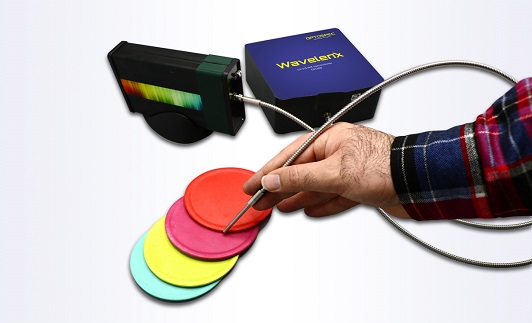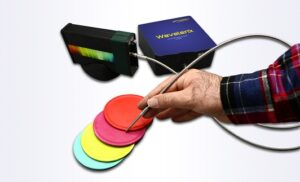Spectrometer
“Spectroscopy” is a broad term that refers to any tool used to measure changes in a specific physical characteristic, namely a spectrum, within a defined range. Mass spectrometry, NMR spectroscopy, and optical spectroscopy are three common types of spectrometry found in research laboratories around the world. Spectrometers work in a wide spectral range, from gamma rays and X-rays to the infrared region. Optospect company manufactures a variety of spectrometers in different models and wavelength ranges according to the needs of its customers.

History
The history of spectrometers dates back to around 300 years before the Common Era when Euclid began his work with mirrors. In the late 17th century, Isaac Newton introduced the term “spectrum” to describe the range of colors created by the dispersion of light through a prism. The analysis and further study of color theory gradually continued, and in the early 19th century, the first spectrometers began to emerge, developed by various scientists.
How does Spectrophotometry work?
Spectroscopy initially absorbs light and then divides it into spectral components (referred to as the signal). In order to display the spectrum via a computer, the signal is digitized as a function of wavelength. The prerequisite for this process is that light enters the spectrometer through the entrance slit. The entrance slit serves as a diaphragm that controls the amount of incoming light to the spectrometer. The light is then directed towards a dispersing element by a concave mirror. The grating disperses the spectral components of light at different angles. The scattered light is concentrated on the detector by a second concave mirror. In the detector, photons are converted to electrons, and through a process, these electrons become digital codes. In the next step, the software interpolates the signal based on the number of pixels in the detector and the linear dispersion of the diffraction grating. Calibration is established in this manner. Finally, the data is plotted as a function of wavelength within a specific spectral range.

In low-cost spectrometers or in situations where precise wavelength selection is not critical, optical filters are used to isolate the desired wavelength range. However, for accurate wavelength selection and spectral generation, a dispersing element that separates light into its constituent wavelengths is required. In all modern spectrometers, this dispersing element is a diffraction grating where constructive and destructive interference is used for spatial separation of light (Figure 3).

Applications of Spectrophotometery
Spectrophotometery is commonly used to analyze the absorbance, transmittance, and reflectance of samples and to analyze light sources. To detect the emitted light from a sample, two methods are employed. In the first method, light is scattered using a diffraction grating. The desired wavelength passes through a slit and interacts with the sample. Subsequently, the emitted light from the sample is detected by a CCD detector and analyzed. In the second method, light interacts with the sample, and then the scattered light from the sample is diffracted and detected by a CCD detector (Figure 4). In all spectrophotometers, such as Raman microscopes, spectrophotometers, etc., at least one spectrometer is used.

Summary
A spectrophotometer or spectrometer is a tool used to measure the characteristics of light in a specific part of the electromagnetic spectrum. The basic operation of a spectrophotometer involves guiding light into the spectrometer, which is then directed towards a diffraction grating by a mirror. The diffraction grating disperses the light, and the scattered light reaches a second mirror and subsequently the detector, allowing the determination of various properties of light, including intensity, wavelength region, and more. Spectrophotometry is commonly used for measuring light absorption, transmission, reflection, and for analyzing light sources.



